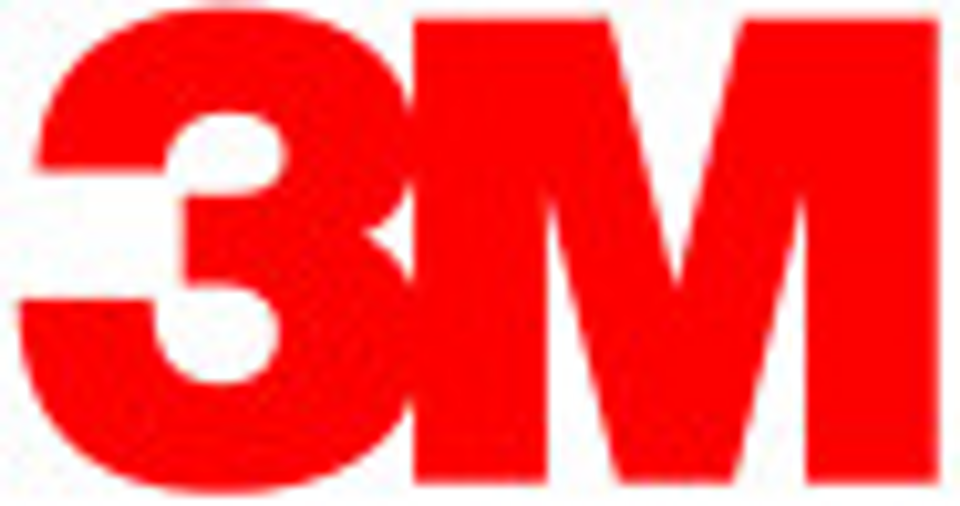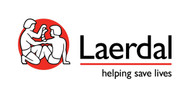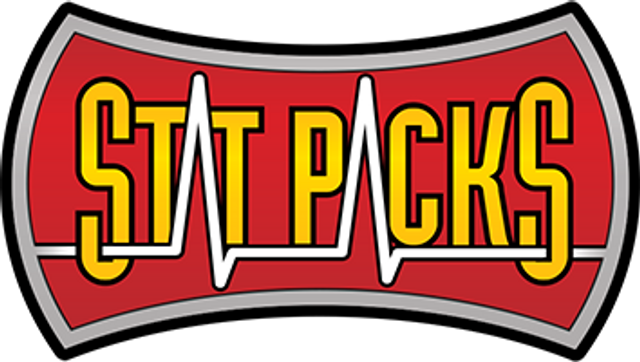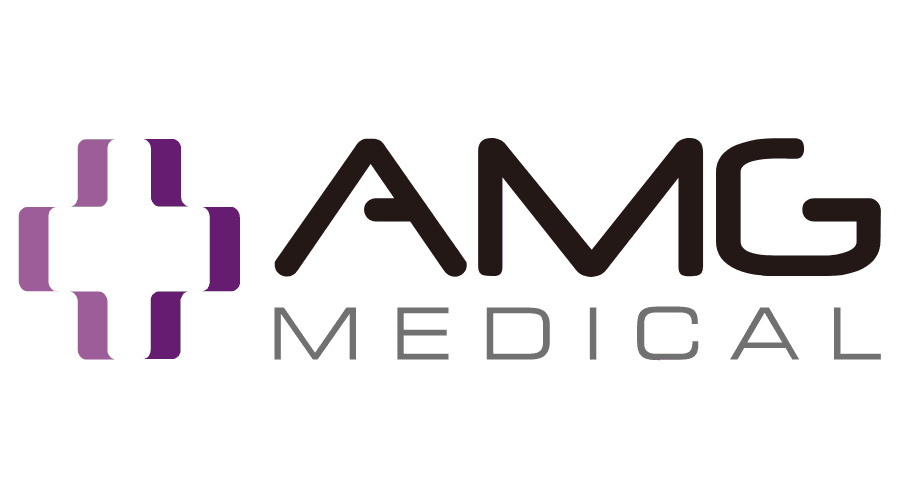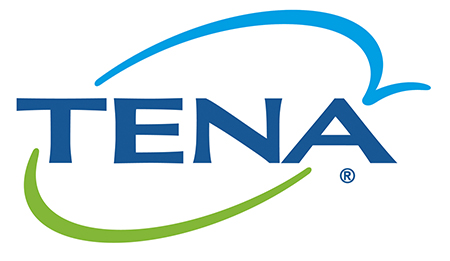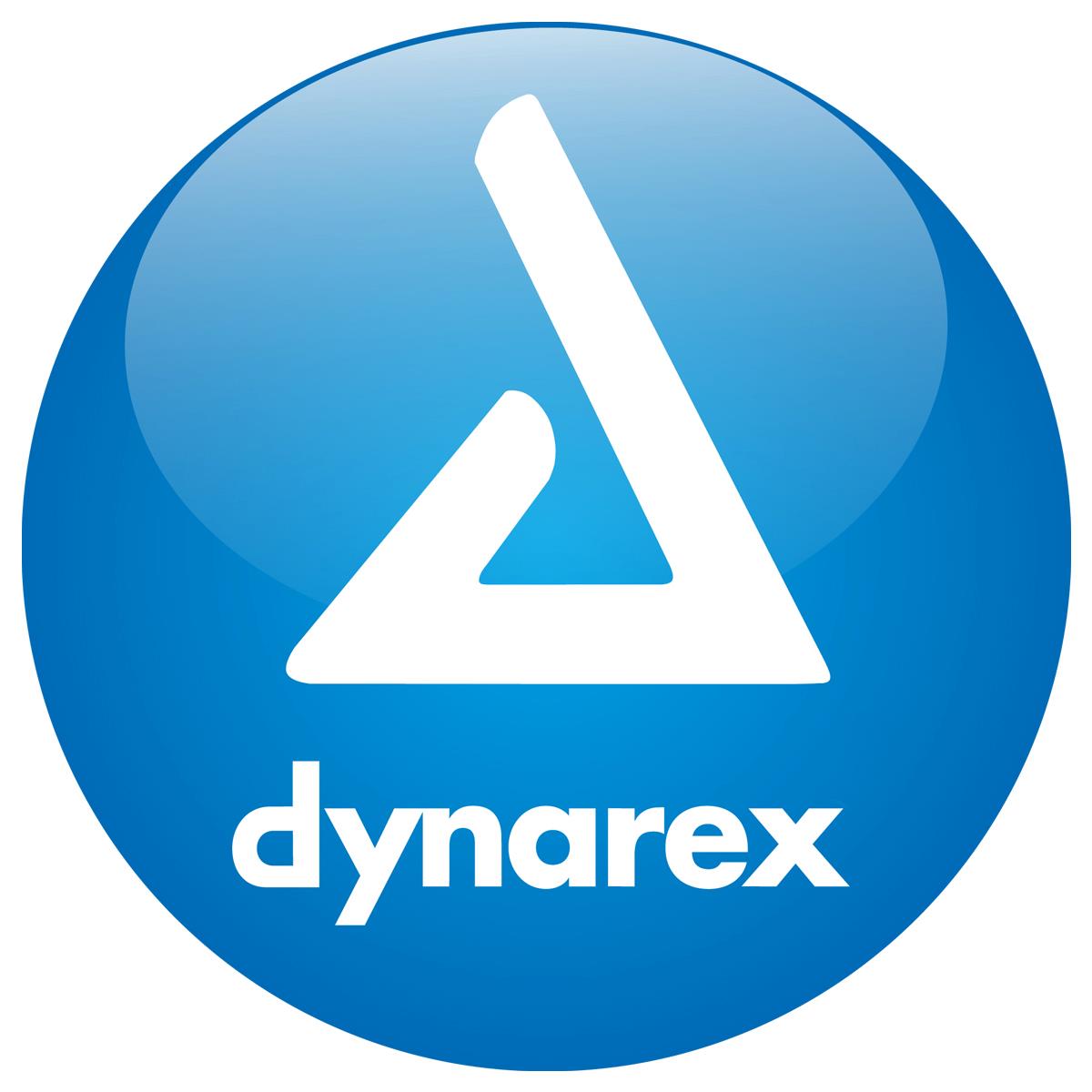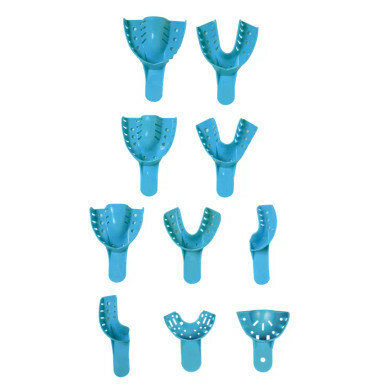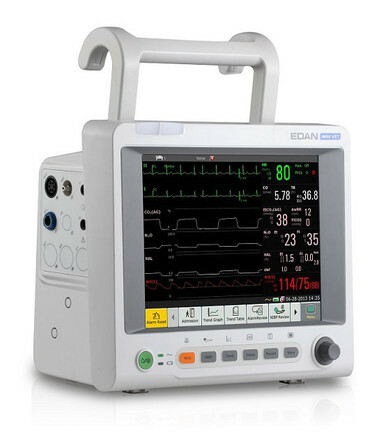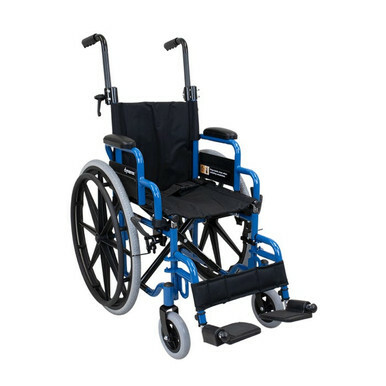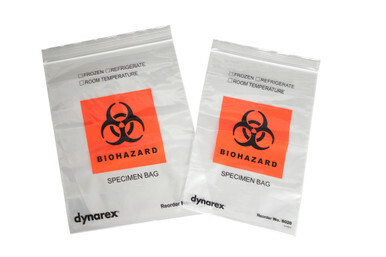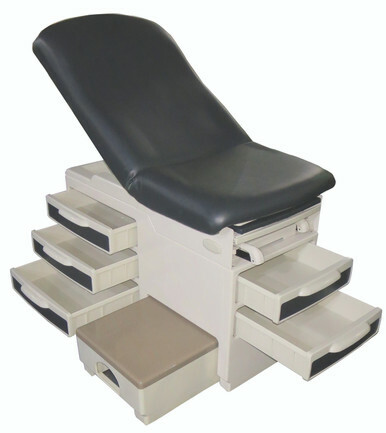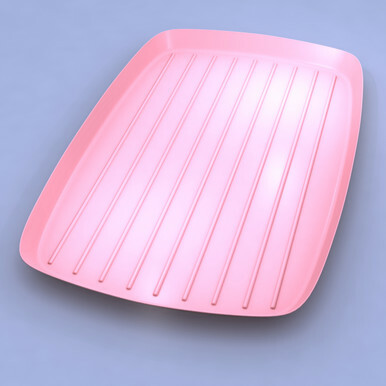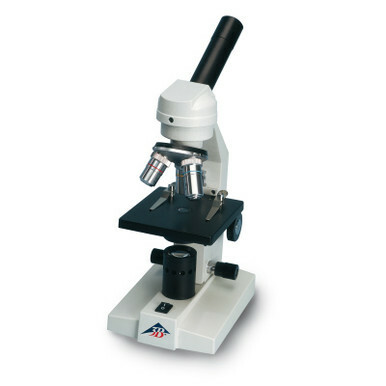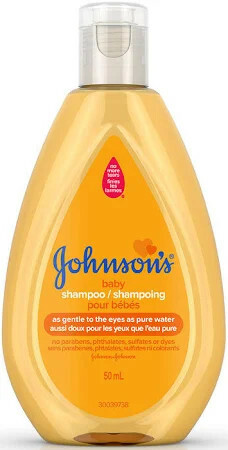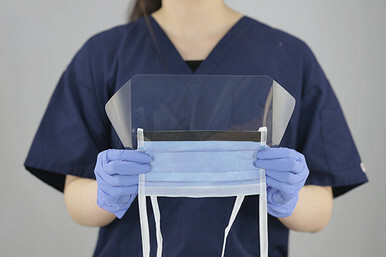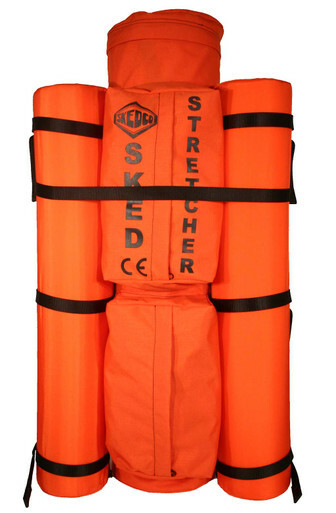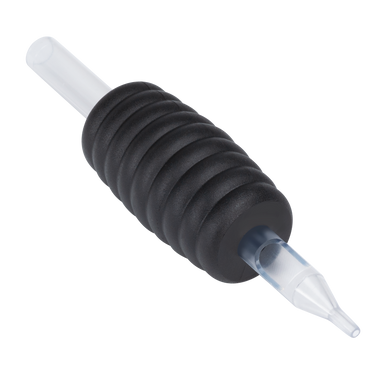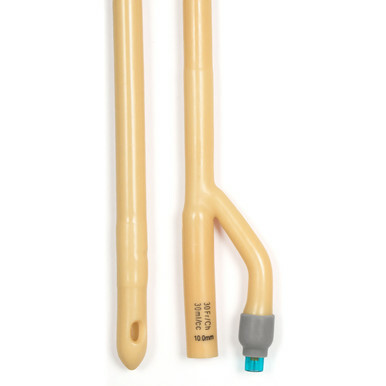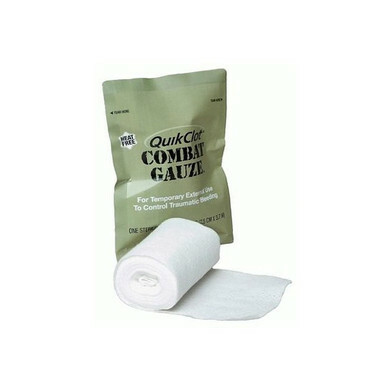Philips Defibrilator FAQ'S
Posted by EMRN on 22nd Nov 2023
Philips M5066A HeartStart Onsite and M5068A HeartStart Home devices
How do I set up a new Philips HeartStart Onsite or Home device for use?
Setting up a new Philips HeartStart Onsite or Home device is simple and quick. Simply open the red carry case and lift out the Philips HeartStart with its wrap-around card. Then follow the instructions on the card. Pull out the red tag.
1. Pull the red tab to start the automatic battery self-test. The defibrillator will tell you it is testing.
2. Press the flashing orange Shock button when the voice tells you to. (No shock will be given.)
3. Wait about one minute. When the Philips HeartStart passes the self-test, the defibrillator turns off and the green Ready light starts blinking to show that the defibrillator is in standby mode and ready for use. Tear the card along the line at the bottom and remove it. Then reinstall the defibrillator in its carry case.
Do the Philips HeartStart Onsite and Home devices run a self-test?
Yes, as long as a battery is installed, the Philips HeartStart Onsite and Home devices automatically test itself every day and alerts you if it finds a problem. The defibrillator also runs a pads self-test each time a pads cartridge is inserted.
You can also test the defibrillator at any time by removing the battery for five seconds then reinstalling it. The Philips HeartStart defibrillator will automatically initiate a self-test. This test takes about one minute. Because the battery insertion self-test is very detailed and uses battery power, running it more often than necessary will drain the battery prematurely. It is recommended that you run the battery insertion self-test only:
• when the defibrillator is first put into service
• after the defibrillator is used to treat a patient
• when the battery is replaced
• when the defibrillator may have been damaged
If you need to use the defibrillator in an emergency while you are running a battery self-test, pull the Philips HeartStart SMART Pads cartridge handle to stop the test and to turn on the Philips HeartStart defibrillator for use.
Is there a difference between the Philips HeartStart Onsite and Home devices?
There is no difference between the Philips HeartStart Onsite and the Philips HeartStart Home devices. The ECG pads cartridge and Philips HeartStart M5070A batteries are compatible for both types of devices.
Can I change the configuration or operational settings of the Philips HeartStart Onsite and Home devices?
Yes, the configuration for the Philips HeartStart Onsite and Home devices can be changed. These devices come with factory default configuration designed to meet the needs of most users. This configuration can only be changed by an authorized person using Philips HeartStart Configure software. This software is for use by trained personnel. Information about Philips HeartStart data management products are available online at the Philips HeartStart website.
What are the environmental specifications of the Philips HeartStart Onsite and Home devices?

These specifications are noted in the Philips HeartStart Owner’s Manual for the defibrillator. The standby temperatures assume that a battery is installed and the unit is stored with ECG pads. When the defibrillator and accessories are exposed to environments outside the recommended temperature and humidity ranges, their performance can be affected.
What does it mean when the green Ready light is blinking?
The Philips HeartStart’s green Ready light is your guide to knowing if the defibrillator is
ready for use.
• If the Ready light is blinking: The defibrillator has passed the battery
insertion self-test and the last periodic self-test and is therefore ready for use.
• If the Ready light is solid: The defibrillator is in use or running a self-test.
• If the Ready light is off, the defibrillator is emitting a series of single chirps,
and the i-button is flashing: A self-test error has occurred, there is a problem with the pads or the battery power is low. Press the i-button for instructions.
• If the Ready light is off, and the defibrillator is emitting a series of triple chirps, please reach out to Philips’ customer service team. Contact details can be found in your AED’s Instructions For Use or Owner’s Manual, or on the Philips AED Support and Service website.
• If the Ready light is off but the defibrillator is not chirping and the i-button is not flashing: there is no battery inserted, the battery is depleted, or the defibrillator needs repair. Insert/replace battery and run the self-test. As long as the defibrillator passes the self-test, you can be assured it is ready for use.
What do I do when the Philips HeartStart device is emitting single-chirp alert tones and the i-button is flashing?

The user should briefly press the blue i-button to hear a possible reason for the alert tones. Then, perform any recommended action as instructed by the defibrillator; for example, if instructed by the defibrillator, replace the battery or the pads cartridge.
- The defibrillator may have been turned off without a pads cartridge installed, or the installed pads cartridge may not have its hard cover in place.
- oTo resolve: Make sure the pads cartridge is properly installed with the hard cover in place.
- The Practice (Training) pads cartridge has been left in the defibrillator.
- oTo resolve: Remove the Practice (Training) pads cartridge and replace with a Philips HeartStart Adult SMART Pads (part number M5071A) or Philips HeartStart Infant/Child SMART Pads (part number M5072A)
- The defibrillator has been stored outside the recommended temperature range.
- oTo resolve: Keep the defibrillator within the recommended temperature range as noted in the Philips HeartStart User’s Manual (Instructions for Use).
- The defibrillator has detected an error during self-test or cannot perform a self-test.
- oTo resolve: If replacing the ECG pads cartridge and the battery does not resolve the issue, please reach out to Philips’ customer service team. Contact details can be found in your AED’s Instructions For Use or Owner’s Manual, or on the Philips AED Support and Service website.
What do I do when the Philips HeartStart device is emitting triple-chirp alert tones?

If at any time during the life of the device, your defibrillator emitted or begins to emit a pattern of triple chirps, it is important that you remove the device from use, and contact Philips. If the Philips HeartStart emits a pattern of triple chirps, it is a signal that the device requires investigation by Philips to ensure that it is ready for use. Of course, if needed for use in an emergency, make every attempt to clear the error and use the device normally, as described in the Owner’s Manual. However, even if you have been able to clear the error, it is important that you contact Philips to obtain the tools and information you need to ensure that your device is functioning properly. Please reach out to Philips’ customer service team. Contact details can be found in your AED’s Instructions For Use or Owner’s Manual, or on the Philips AED Support and Service website.
What routine maintenance is needed for the Philips HeartStart device?
The Philips HeartStart defibrillator is very simple to maintain. The defibrillator performs a self-test every day. In addition, a battery insertion self-test is run whenever a battery is installed in the device. The defibrillator’s extensive automatic self-test features eliminate the need for any manual calibration. The Philips HeartStart has no user serviceable parts.
Are the Philips HeartStart devices sold at Amazon.com new or refurbished?
All Philips HeartStart devices sold by Amazon.com are new devices.
Are the Philips HeartStart Onsite and Home devices fully automatic or semi-automatic?
All Philips HeartStart Onsite and Home are semi-automatic defibrillators.
Will the Philips HeartStart Onsite and Home devices auto-update for software upgrades?
No, the Philips HeartStart Onsite and Home devices do not perform an auto-update for software upgrades.
upgrades.
Is there a maintenance plan for the Philips HeartStart Onsite and Home devices?
Philips provides an 8-year warranty for new Philips HeartStart Onsite and Home devices in the United States. However, for Amazon customers, device returns and exchanges will be initiated only for out-of-box issues or device failures within the warranty period.
Will the Philips HeartStart Onsite and Home devices need a battery charger?
No, the Philips HeartStart Onsite and Home devices use a 9VDC, 4.2Ah, lithium manganese dioxide disposable non-rechargeable battery. A battery charger is not required.
Will the Philips HeartStart Onsite and Home devices package kits come with a second battery?
No, a second (spare) battery is not included with any Philips HeartStart device. Additional batteries may be purchased separately.
Can the Philips HeartStart Onsite and Home devices be purchased in different languages?
Yes, the Philips HeartStart Onsite and Home devices can be purchased in a variety of languages. Please contact Philips for a list of available languages. You may reach out to Philips’ customer service team. Contact details can be found in your AED’s Instructions For Use or Owner’s Manual, or on the Philips AED Support and Service website.
Can I update the Philips HeartStart Onsite and Home device I currently own to a different language?
No, the Philips HeartStart Onsite and Home devices cannot be updated to a different language after the point-of-sale.
Do the Philips HeartStart Onsite and Home devices come with a CPR mask?
No, the pocket mask is only available for Value Packages with the following ASINs: B00KSAL7LS and B003U9L78W.
Will the user of the Philips HeartStart defibrillator be protected by a Good Samaritan Law?
Please refer to your local regulations for information.
What is the difference between the Home and Value Package?
Please refer to the product detail page in Amazon.com for information.
Do the Philips HeartStart Onsite and Home devices have audio?
Yes, the Philips HeartStart devices have audio capability.
Does the Philips HeartStart Value Pack include adult pads?
Yes, the Philips HeartStart Value Pack includes Philips HeartStart Adult SMART Pads (part number M5071A). Please refer to the product detail page in Amazon.com for more information.
The Philips HeartStart Onsite and Home devices use a special Infant/Child SMART Pads Cartridge (M5072A) for treating children under 55 pounds (25 kg) or less than 8 years old. If you may need to defibrillate an infant or a child in this age/weight range, it is recommended that you order the Infant/Child Pads Cartridge, available separately.
Do the Philips HeartStart Onsite and Home devices require a prescription from a doctor for purchase?
No, the Philips HeartStart automated external defibrillators (AEDs) are designed specifically for use by the first people responding to an emergency. They are reliable, easy to use, and virtually maintenance free. The design allows these AEDs to be used by people with no medical training in places where defibrillators have not traditionally been used. In fact, the HeartStart Home was the first AED cleared by the United States Food and Drug Administration (FDA) for sale without a prescription.
Will the Philips HeartStart deliver a shock whenever the Shock Button is pressed?
No, the Philips HeartStart will deliver a shock only when the Shock Button is pressed and the defibrillator’s algorithm software determined that the patient’s ECG shows a shockable rhythm. An audible message will instruct the user to press the Shock Button when the defibrillator determines that a shockable ECG rhythm is present.
Do the Philips HeartStart Onsite and Home devices have a Training Mode?
Yes, the Philips HeartStart Onsite and Home devices have a Training Mode. This mode can only be accessed when Practice (Training) pads are installed onto the defibrillator.
Any use of the Philips AED for training will directly reduce the amount of energy left in the battery to power the unit and will result in a reduction of the battery life. It is recommended that the HeartStart Trainer M4085A be used for training. It is powered by four standard AA alkaline batteries.
Do the Philips HeartStart Onsite and Home devices use a biphasic waveform to deliver a shock?
Yes, SMART Biphasic is the patented waveform used by all Philips HeartStart AED devices. It is an impedance-compensating, low energy (<200 J), low capacitance (100 μF), biphasic truncated exponential (BTE) waveform that delivers a fixed energy of 150 J for defibrillation. Philips was the first company to develop a biphasic waveform for use in Philips HeartStart AED devices.
Are there any other yearly or monthly fees associated with the purchase of a Philips HeartStart Onsite and Home device?
No, there are no monthly or annual fees associated with owning the Philips HeartStart Onsite and Home device.
Are there requirements for certified testing/maintenance of the Philips HeartStart Onsite and Home devices?
No, there are no requirements for certified training or maintenance for the Philips HeartStart AED devices. The Philips HeartStart M5070A battery should last approximately 4 years and the ECG pads expire in 2 years.
Do the Philips HeartStart Onsite and Home devices ship with a tutorial CD?
No, the Philips HeartStart Onsite and Home devices do not ship with a tutorial CD.
Is the Philips HeartStart Onsite and Home devices compliant with the latest AHA Guidelines?
Yes, the Philips HeartStart Onsite and Home devices comply with the latest AHA Guidelines.
What additional parts/supplies are required for use with infants/children?
If you may need to defibrillate an infant or a child under 55 pounds (25 kg) or 8 years old with a Philips HeartStart Defibrillator, it is recommended that you order the Infant/Child Pads Cartridge
(M5072A), available separately. When the Infant/Child Pads Cartridge is installed in the Philips HeartStart Onsite and Home, the device automatically reduces the defibrillation energy to 50 joules and, if optional CPR Coaching is selected, provides coaching appropriate for infants and children.
Do the Philips HeartStart Onsite and Home devices provide verbal instructions during use?
Yes, the Philips HeartStart Onsite and Home devices provide clear, calm, audible prompts that guide the user through the process of using the device.
In its default configuration, the Philips HeartStart defibrillators provide basic verbal instructions for performing cardiopulmonary resuscitation, including hand placement, rescue breathing, compression depth and timing, provided by the Philips HeartStart when the flashing blue i-button is pressed during the first 30 seconds of a patient care pause. If the Infant/Child Pads Cartridge is inserted in the Philips HeartStart, the CPR Coaching provided will be for infant/child CPR
Are the Philips HeartStart Onsite and Home devices for one-time use only?
No, the Philips HeartStart Onsite and Home devices can be used for multiple patients.
Can the Philips HeartStart Onsite and Home devices be used for all ages of patients?
Yes, the Philips HeartStart Onsite and Home devices can be used on all ages of patients. The appropriate type of ECG pads cartridge should be installed to ensure that the proper energy charge is delivered to the patient.
Each HeartStart AED is shipped with one Adult SMART Pads Cartridge M5071A, containing one set of adhesive defibrillation pads. The Philips HeartStart Adult SMART Pads (part number M5071A) are intended for any patient eight years or older, or weighing a minimum of 55 pounds (25 kilograms).
The HeartStart AED uses a special Infant/Child SMART Pads Cartridge (M3872A) for treating children under 55 pounds (25 kg) or less than 8 years old. If you may need to defibrillate an infant or a child in this age/weight range, it is recommended that you order the Infant/Child Pads Cartridge (part number M5072A), available separately.
Are there guidelines for the use of Philips HeartStart Onsite and Home devices in extreme temperatures?
The Philips HeartStart AED Owner’s Manual (Instructions for Use) specifies the recommended temperature range for the use of the Philips HeartStart Onsite and Home devices.
Are the Philips HeartStart Onsite and Home Owner’s Manual (Instructions for Use) document available in different languages?
The Philips HeartStart Onsite and Home Owner’s Manuals (Instructions for Use) are provided in the appropriate language with the purchase of the Philips HeartStart AED. You may also visit the Philips AED Support and Service website to access the Philips HeartStart Owner’s Manuals, Technical Reference Manuals, Product Notices, AED accessories information, and demo videos on the use of the Philips HeartStart AED devices.
How many pads are included with the purchase of a Philips HeartStart Onsite or Home device?
Each HeartStart AED is shipped with one Adult SMART Pads Cartridge M5071A, containing one set of adhesive defibrillation pads. Additional pads for adult or pediatric use may be purchased separately.
Will the red carry case be included with the purchase of a Philips HeartStart Onsite or Home device?
Yes, the red carry case is included with the purchase of a Philips HeartStart Onsite or Home device.
Does the Philips HeartStart Onsite and Home device require a setup prior to use?
The Philips HeartStart AED must have the appropriate ECG pads cartridge and a working battery installed in the device with the green Ready light blinking at regular intervals prior to patient-use. See the Instructions For Use document for more information.
What type of training is needed to use the Philips HeartStart Onsite and Home devices?
No training is required to use the Philips HeartStart Onsite or Home device.
Are the Philips HeartStart Onsite and Home devices the same as the Philips HeartStart FRx defibrillator?
No, the Philips HeartStart Onsite and Home devices are not the same as the Philips HeartStart FRx devices. For questions or additional support regarding Philips HeartStart devices and accessories, please reach out to Philips’ customer service team. Contact details can be found in your AED’s Instructions For Use or Owner’s Manual, or on the Philips AED Support and Service website.
You may also visit the Philips AED Support and Service website to access the Philips HeartStart AED Owner’s Manuals, Technical Reference Manuals, Product Notices, AED accessories information, and demo videos on the use of the AED devices.
Where are the Philips HeartStart Onsite and Home devices manufactured?
The Philips HeartStart Onsite and Home devices are manufactured in the USA.
Do the Philips HeartStart Onsite and Home devices need 220V or 110V AC power?
No, the Philips HeartStart Onsite and Home devices require the use of Philips HeartStart M5070A 9VDC, 4.2Ah, lithium manganese dioxide disposable non-rechargeable battery. AC power is not required to operate the defibrillator.
Is a wall mount available for use with the Philips HeartStart Onsite and Home devices?
Yes, a wall mount may be purchased separately.
Can I use the Philips HeartStart Onsite and Home devices in the presence of concentrated oxygen?
The Owner’s Manual provided with the Philips HeartStart AED contains a warning that there is a possibility of explosion if the device is used in the presence of flammable anesthetics or concentrated oxygen. This refers to situations where a fire hazard is present. In these rare situations, a patient may be in an environment where a spark could ignite any combustibles present, such as clothes or bedding.
While this may be a problem in a hospital environment when an oxygen tent is in use, it is safe to deploy the defibrillator when using an oxygen canister with a mask on the patient. In this situation there are not high concentrations of oxygen accumulating around the patient's chest that would pose a risk. EMS personnel and paramedics commonly administer oxygen while
performing CPR and typically do not remove this equipment if the patient needs to be defibrillated. However, if practice is to remove the oxygen mask before defibrillating, care should be taken to ensure that oxygen is not flowing across the patient’s chest.
Is the Philips HeartStart FRx defibrillator’s infant/child key compatible with the Philips HeartStart Onsite and Home devices?
No, the Philips HeartStart FRx infant/child key is not compatible for use with the Philips HeartStart Onsite and Home devices.
Can I use the Philips HeartStart Onsite and Home devices on a wet or metal surface?
Yes, it is safe to defibrillate a patient on either a wet or metal surface as long as the appropriate safety precautions are taken. Specifically, care should be taken to ensure that no one is touching the patient when the shock button is pressed.
Can I use the Philips HeartStart Onsite and Home devices on a patient with an implanted pacemaker or defibrillator?
Yes, the Philips HeartStart AED devices may be used on patient with an implanted pacemaker or defibrillator. Avoid placing the ECG pads directly over the implanted pacemaker or defibrillator. A noticeable lump with a surgical scar should indicate the position of an implanted device.
How do I download patient ECG data from the Philips HeartStart Onsite or Home device?
The Philips HeartStart automatically stores data about its last clinical use in its internal memory. The stored data can be conveniently transferred to a personal computer running the appropriate application in the Philips HeartStart data management software suite. Data management
software is for use by trained personnel only.
Can I use a cell phone or two-way radio near a Philips HeartStart AED device?
Yes, the Philips HeartStart AED can work correctly when it is fairly close to equipment like emergency two-way radios and cell phones. Normally, using a cell phone near the patient should not cause a problem for the AED. However, it is best to keep such equipment only as close as necessary to the patient and the Philips HeartStart AED.
How do I clean the Philips HeartStart Onsite and Home devices?
The outside of the Philips HeartStart Onsite and Home devices and its carry cases can be cleaned with a soft cloth dampened in soapy water, chlorine bleach (2 tablespoons per quart or liter of water), or ammonia-based cleaners.
REMINDERS:
• Do not use isopropyl (rubbing) alcohol, strong solvents such as acetone or acetone-based cleaners, abrasive materials, or enzymatic cleaners to clean your Philips HeartStart AED.
• Do not immerse the defibrillator in fluids or allow fluids to spill onto it.
• Do not sterilize the defibrillator or its accessories.
How do I dispose the Philips HeartStart AED devices?
The defibrillator contains electronic components. Do not dispose of it as unsorted municipal waste. Collect such electronic waste separately and dispose of it at an appropriate recycling facility according to your country's or local regulations.
Who do I contact for additional information on the use and operations of the Philips HeartStart AED devices?
For questions or additional support regarding Philips HeartStart devices and accessories, please reach out to Philips’ customer service team. Contact details can be found in your AED’s Instructions For Use or Owner’s Manual, or on the Philips AED Support and Service website.
You may also visit the Philips AED Support and Service website to have access to Philips HeartStart Owner’s Manuals, Technical Reference Manuals, Product Notices, AED accessories information, and demo videos on the use of the Philips HeartStart AED devices.
Are the Philips HeartStart AED devices FDA approved?
Yes, all the AED devices manufactured by Philips are approved for sale by the United States Food and Drug Administration (FDA).
Philips HeartStart M5071A and M5072A ECG pads cartridges
- •Adult SMART Pads Cartridge (spare recommended) [REF: M5071A]
- •Infant/Child SMART Pads Cartridge [REF: M5072A]
- Adult Training Pads Cartridge [REF: M5073A]
- Infant/Child Training Pads Cartridge [REF: M5074A]
Use only HeartStart Adult SMART Pads M5071A or Infant/Child SMART Pads M5072A with the Philips HeartStart Onsite and Home Defibrillators.
The Philips HeartStart practice (training) pads are for practicing how to use your Philips HeartStart AEDs. They cannot be used to treat sudden cardiac arrest. Store the practice pads separately from your Philips HeartStart defibrillator.
Are the Practice (Training) Pads compatible with both the Philips HeartStart Onsite and Home devices?
Yes, the Philips HeartStart Adult Practice (Training) Pads M5073A and Philips HeartStart Infant/Child Practice (Training) Pads M5074A are compatible with both the Philips HeartStart Onsite and Home devices.
The Philips HeartStart practice (training) pads are for practicing how to use your Philips HeartStart AEDs. They cannot be used to treat sudden cardiac arrest. Store the practice pads separately from your Philips HeartStart defibrillator.
Where should I place the ECG pads on a patient during a patient-event?
The Philips HeartStart M5072A Infant/Child SMART pads should be used if the patient is under 25 kg (55 pounds) or less than 8 years old. During a patient-use event, place one pad in the center of the chest between the nipples, and the other in the center of the back (anterior-posterior).

The Philips HeartStart M5071A adult SMART pads should be used if the patient is over 25 kg (55 pounds) or more than 8 years old, or if you are not sure of the exact weight and age. During a patient-use event using the adult pads cartridge, place the pads as illustrated on the pads (anterior-anterior). Make sure the pads do not overlap or touch each other.
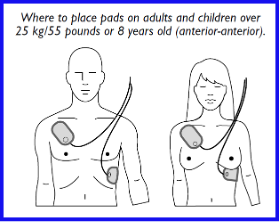
Does the Philips HeartStart AED test the functionality of the ECG pads?
Yes, if a battery is installed, the Philips HeartStart defibrillator automatically runs self-tests every day and alerts you if it finds a problem. The self-test includes pads readiness testing. In addition, it runs a pads self-test each time a pads cartridge is inserted. The Philips HeartStart AED will alert the user if it finds a problem.
How often should I replace the ECG pads cartridge?
These pads have an expiration date of two years from the date of manufacture and they should be checked and replaced as needed.
The pads must also be replaced if the Philips HeartStart AED detects a pads failure during its regular self-test.
NOTE: To prevent the pads’ adhesive gel from drying out, do not open the hard cover or film seal of the cartridge until you need to use the pads.
Do the ECG pads cartridges have an expiration date?
Yes, the ECG pads have an expiration date of two years from the date of manufacture and they should be checked and replaced as needed.
How do I replace the ECG pads cartridge on a Philips HeartStart Onsite and Home AED device?
Locate the latch at the top edge of the Philips HeartStart AED device and slide it to the side. The pads cartridge will be released. Remove the old pads cartridge.
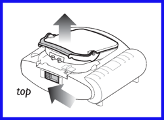
Remove a new SMART pads cartridge from its packaging and insert the cartridge into the cartridge well on the front of the Philips HeartStart AED device. It should click into place when properly seated. The green PULL handle should be all the way down.

Can I reuse the ECG pads cartridge for multiple patients?
No, the single-use pads must be replaced after being used.
How do I dispose used or expired ECG pads?
The used pads may be contaminated with body tissue, fluid, or blood. Dispose of them as infectious waste. Recycle the case at an appropriate recycling facility.
Who do I contact for additional information on the use of the Philips HeartStart ECG pads?
For questions or additional support regarding Philips HeartStart devices and accessories, please reach out to Philips’ customer service team. Contact details can be found in your AED’s Instructions For Use or Owner’s Manual, or on the Philips AED Support and Service website.
You may also visit the Philips AED Support and Service website to access the Philips HeartStart Owner’s Manuals, Technical Reference Manuals, Product Notices, AED accessories information, and demo videos on the use of the Philips HeartStart AED devices.
Philips HeartStart M5070A batteries
How do I replace the Philips HeartStart battery?
Your Philips HeartStart defibrillator is equipped with a disposable, long-life battery (part number Philips HeartStart M5070A) that will typically last for four years in standby mode. It is recommended that you keep a spare battery available at all times. Keep the spare battery in its protective plastic bag until it is needed for use. When the battery power gets low, the defibrillator will alert you in several ways: it will begin chirping, the green Ready light will stop blinking, and the blue i-button will start flashing.
To replace the battery:
1. Make sure you have a pads cartridge installed in the defibrillator.
2. Locate the battery compartment on the back of the defibrillator.
3. Press the tab attached to the top of the battery to release the catch. Remove the battery.
4. Slide a new battery into place. Check to see that its latch is holding it in place.
5. A battery insertion self-test will automatically run. It is important to press the Shock button when instructed to ensure that the defibrillator will be ready for use. Be sure to let the self-test run all the way to completion. When the self-test is complete, make sure that the green Ready light is blinking. Your Philips HeartStart defibrillator is ready for use.
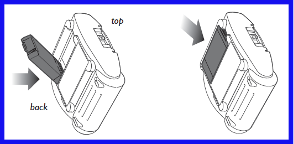
What is the battery type for the Philips HeartStart Onsite and Home devices?
The power source for the Philips HeartStart Onsite and Home devices is a 9 VDC, 4.2 Ah battery pack. It contains 9 LiMnO2 battery cells, similar to those used in cameras. The battery pack is non-rechargeable.
Is the Philips HeartStart M5070A battery compatible with both the Philips HeartStart Onsite and Home devices?
Yes, the Philips HeartStart M5070A battery is compatible with both the Philips HeartStart Onsite and Home devices.
Are rechargeable batteries available for the Philips HeartStart Onsite and Home devices?
No, rechargeable batteries are not available for the Philips HeartStart Onsite and Home devices.
What are some troubleshooting hints for the Philips HeartStart M5070A batteries?
Anytime that a battery is suspected of being low or having problems, the first troubleshooting step should be to perform a Battery Insertion Test (BIT) using the suspect battery, which is initiated by removing then re-inserting the battery into the unit. If the unit passes a BIT with no indications of battery problems, the unit and battery are both ready for service. Other conditions, such as keeping the unit outside the recommended storage temperature can cause failure messages similar to a low battery message. These messages will be cleared out with a successful BIT. If the unit does not pass the BIT, the BIT should be reattempted with a known good battery in order to determine if the battery is the cause of the failed BIT. If the unit again does not pass, please reach out to Philips’ customer service team. Contact details can be found in your AED’s Instructions For Use or Owner’s Manual, or on the Philips AED Support and Service website.
Can I open the Philips HeartStart M5070A batteries and replace the cells?
Do not try to recharge, open, crush, or burn the battery, or it may explode or catch fire.
What is the capacity of the Philips HeartStart M5070A batteries?
When new, a minimum of 200 shocks or 4 hours of operating time at 77 degrees F (25 degrees C). Supports 10 hours of use in Training mode.
How often should I replace Philips HeartStart M5070A batteries?
You should replace the battery every 4 years.
What is the shelf life of the Philips HeartStart M5070A batteries (prior to use)?
A minimum of 5 years from the date of manufacture when stored and maintained according to directions provided in the Philips HeartStart Owner’s Manual.
What is the “Install By“ date printed on the battery?
The battery will have a working life of 4 years from the install date if the battery is installed into the Philips HeartStart AED device before the printed “Install By” date and if it was stored and maintained according to directions provided in the Philips HeartStart Owner’s Manual.
How do I dispose used or expired Philips HeartStart M5070A batteries?
The battery cells contain chemicals. The chemistry used in each battery is identified by a symbol on the label; symbols are defined in the defibrillator Owner's Manual. Recycle the battery at an appropriate recycling facility.
Who do I contact for additional information on the use of Philips HeartStart AED batteries?
For questions or additional support regarding Philips HeartStart devices and accessories, please reach out to Philips’ customer service team. Contact details can be found in your AED’s Instructions For Use or Owner’s Manual, or on the Philips AED Support and Service website.
You may also visit the Philips AED Support and Service website to access the Philips HeartStart Owner’s Manuals, Technical Reference Manuals, Product Notices, AED accessories information, and demo videos on the use of the Philips HeartStart AED devices.
AED Cabinet and other accessories
Are the Philips HeartStart AED cabinets recessed-installed onto a wall?
• AED wall mount bracket [REF: 989803170891]
• Basic surface-mounted cabinet [REF: 989803136531]
• Premium surface-mounted cabinet [REF: PFE7024D]
• Premium semi-recessed cabinet [REF: PFE7023D]
Some Philips HeartStart AED cabinets can be recessed-installed onto a wall. Please refer to the cabinet Owner’s Manual or contact Philips for additional information. Please reach out to Philips’ customer service team. Contact details can be found in your AED’s Instructions For Use or Owner’s Manual, or on the Philips AED Support and Service website.
Can the Philips HeartStart AED cabinet be locked?
No, the Philips HeartStart AED cabinet cannot be locked to allow easy access to the device during a patient-use situation. The “key lock” found on the front of the Philips HeartStart AED cabinet enables and disables the cabinet alarm.
How long is the working life of the Philips HeartStart AED cabinet battery?
The Philips HeartStart AED cabinet uses a standard commercial disposable 9V battery. The battery life depends on the brand of disposable battery used in the cabinet. The cabinet manufacturer recommends the use of alkaline batteries for best results and yearly replacement.
When the Philips HeartStart AED cabinet is purchased, will the Philips HeartStart AED device be part of the kit?
No, the Philips HeartStart defibrillator is sold separately from the Philips HeartStart AED cabinet.
Does the Philips HeartStart AED cabinet need to be wired to AC power for the alarm to work?
No, the Philips HeartStart AED cabinet alarm is powered by standard 9V commercial batteries; it does not need to be wired to AC power.
Is the Philips HeartStart Wall Mount Bracket compatible with both the Philips HeartStart Onsite and Home defibrillators with the carry case?
Yes, the Wall Mount Bracket is compatible with both the Philips HeartStart Onsite and Home devices with carry case.
Who do I contact for additional information on the use of Philips HeartStart AED accessories?
For questions or additional support regarding Philips HeartStart devices and accessories, please reach out to Philips’ customer service team. Contact details can be found in your AED’s Instructions For Use or Owner’s Manual, or on the Philips AED Support and Service website.
You may also visit the Philips AED Support and Service website to access the Philips HeartStart Owner’s Manuals, Technical Reference Manuals, Product Notices, AED accessories information, and demo videos on the use of the Philips HeartStart AED devices.

